The 2009 pirate craze may have slowed down a little, but nobody stops a pirate. They’ll be back on September 19 at the latest. Sonja Schillings is currently writing a doctoral thesis on pirates in public imagination at FU Berlin’s Graduate School of North American Studies. We talked about peg-legs, pirate cartoons, and the history of modern piracy in Somalia.
Sonja, over the last few years I’ve had the impression that the number of pirates in everyday life has increased. Would you say that this is true?
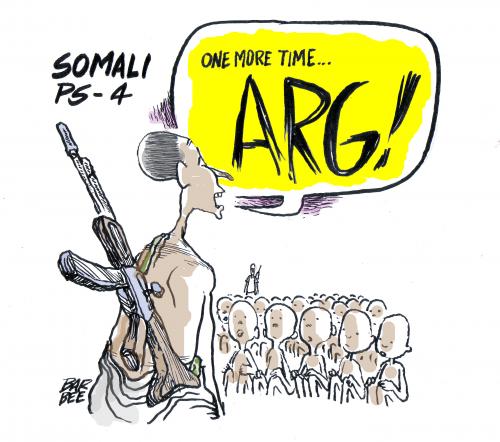 Yes, they are definitely more popular. First, there has been all the hype about Pirates of the Caribbean since 2003. The films meant a revival and a reworking of the pirate cliché that somehow caught on.
Yes, they are definitely more popular. First, there has been all the hype about Pirates of the Caribbean since 2003. The films meant a revival and a reworking of the pirate cliché that somehow caught on.
This didn’t come out of the blue, though. There had been a pirate revival on the internet for some time – take the Pirates VS Ninjas meme, for example. There were also computer games like the Monkey Island series. These developments were a great influence on Pirates of the Caribbean.
So, is the pirate craze basically an internet phenomenon that has been carried over to mainstream culture?
On one level, yes. Pirates of the Caribbean would certainly not have been this successful without the constant reference to pirates on the internet. On the other hand there’s an increasing number of reports about actual pirates. This began soon after. Somali pirates in particular began to capture ships on a larger scale in 2005, and they continue to do so today.
Why did they show up so suddenly in 2005?
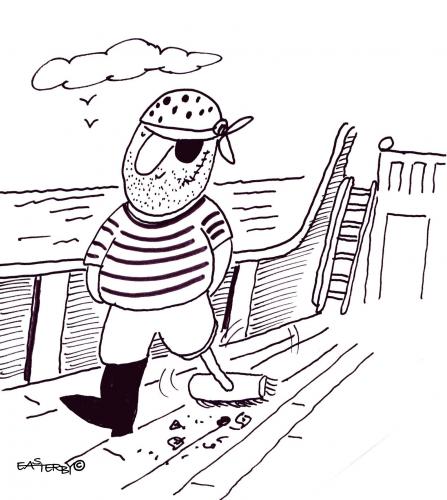 Well, they did exist before that but modern piracy in general was more of an issue for experts. Modern piracy came up as a topic in the early 1980s and things got worse over the years – especially since the end of the Cold War. Weapons became extremely cheap then and weak states, like Somalia, collapsed.
Well, they did exist before that but modern piracy in general was more of an issue for experts. Modern piracy came up as a topic in the early 1980s and things got worse over the years – especially since the end of the Cold War. Weapons became extremely cheap then and weak states, like Somalia, collapsed.
That’s why Somali pirates can conduct large-scale operations. They can hijack whole ships and keep hold of them for several months. They make a lot of profit by specializing on ships of the international community rather than local ones. Ransom demands have systematically increased in the last couple of years.
So, how did they decide to become pirates?
The major theory about how the whole Somali piracy thing started in the first place goes as follows: since Somalia does not have a functioning government, Western fishing fleets systematically exploited Somalia’s territorial waters. Somali fishermen repeatedly addressed the EU and other institutions about it, without much success. Eventually, they attacked the fishing fleets and discovered that there was a lot of money in it. This beginning still shows in the names pirate crews will give themselves: Many of them call themselves “coast guards”.
I didn’t know that these pirate crews had names.. do they have flags, too?
I actually don’t think so. Pirate flags – the Jolly Roger, Skull-and-Crossbones – were part of a naval system that relied on flags as a central means of communication. Today, things are different.
Most cartoons about pirates – modern or traditional – rely on a number of stereotypes: eye patches, peg legs, parrots. Can you tell me where these clichés come from?
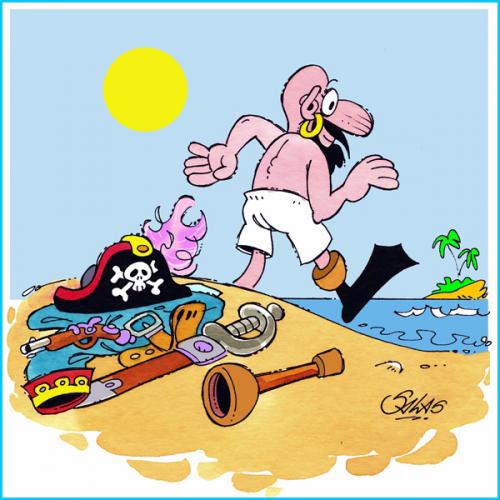 Most of them refer to the Golden Age of Piracy between 1650 and 1726. During that time, people started to construct clichés about pirates. The most famous text of that period is A General History of the Most Notorious Pyrates. Pirates themselves picked up on these stories, for the same reason they used Jolly Roger flags – in order to create fear.
Most of them refer to the Golden Age of Piracy between 1650 and 1726. During that time, people started to construct clichés about pirates. The most famous text of that period is A General History of the Most Notorious Pyrates. Pirates themselves picked up on these stories, for the same reason they used Jolly Roger flags – in order to create fear.
Other clichés have little to do with the Golden Age, but are still attributed to it. For example, having people “walk the plank” has its origins in the 19th century. This was part of an American discourse about Cuban pirates that found its way into pirate literature. The peg leg and the parrot were introduced by Stevenson’s Treasure Island, while other elements were actually developed in the 20th century. That “Arrr” sound, for example, dates from the time when sound was introduced to the movies.
To make it short, the pirate cliché has developed over a very long period of time. But all elements have been used to describe Golden-Age pirates almost exclusively. So, it’s only natural that the same reference will be used for the Somali pirates in cartoons. Cartoon readers must be able to quickly comprehend the situation depicted. That’s why Somali pirates will often wear ‘piratish’ clothes and may even have parrots or at least a small pirate flag.
Are there any parallels between Somali pirates and the Golden Age stereotype?
There’s a kind of a David VS Goliath situation inviting people to fill it with significance. It’s an ongoing phenomenon that piracy doesn’t simply create adversity. Some people will say: “Well, perhaps they stand for something that we could do better; Perhaps they are a kind of personified critique of our own ways.” During the Golden Age people would identify with the pirates’ egalitarian principles. Today, some people think that we created those pirates ourselves when we overfished their waters and dumped our nuclear waste there. They see them as a personification of the Third World finally standing up to the exploitation.
Isn’t such a David VS Goliath situation something that links pirates to terrorists? Of course terrorists hardly have that positive connotation you just mentioned.
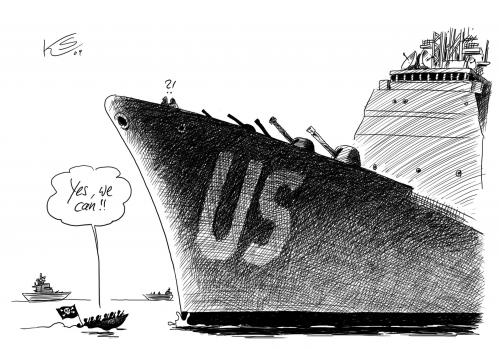 That’s true. Both groups have always been extremely hard to define – that’s something that comes with the David VS Goliath situation. Samuel Coleridge once said “No man is a pirate unless his contemporaries agree to call him so.” This is also true for terrorism; there is no universal definition.
That’s true. Both groups have always been extremely hard to define – that’s something that comes with the David VS Goliath situation. Samuel Coleridge once said “No man is a pirate unless his contemporaries agree to call him so.” This is also true for terrorism; there is no universal definition.
One popular way to differentiate between the two is to say that a terrorist will attack in order to reach a political goal while a pirate does it for his own economical goals. This is of course very simplified, and it does not solve the definition problem at all.
Are there any instances where the distinction between pirates and terrorists is blurred?
This happens a lot with the Somali pirates. When you take a look at newspaper articles on the topic, you will notice that there are constant speculations about how pirates might join forces with terrorists or about them being financed by terrorists. I recently read a book whose author constantly refers to “terrorists/pirates”. It’s a very common train of thought, especially after 9/11.
Is this train of thought getting stronger?
It has never been weak, but yes, I think it still gets stronger. Consider the seizure of an American ship in April 2009. After a short outcry on piracy that directly followed that seizure, there’s now a strange lack of reporting. Instead, you see an increasing coverage on Islamist groups in Somalia. I could imagine that we will sooner or later return to our Skull and Crossbone when we think of pirates. In parallel, we may start to associate Somalia with terrorism. Great efforts are certainly made to achieve that. But in the end, it all depends on the pirates. If they are defeated, that was that. If raids continue to succeed, it will become difficult to ignore them out of existence.
Thanks for your time!
© toonpool.com
Tags: piraten, Pirates, somalia, Sonja Schillings
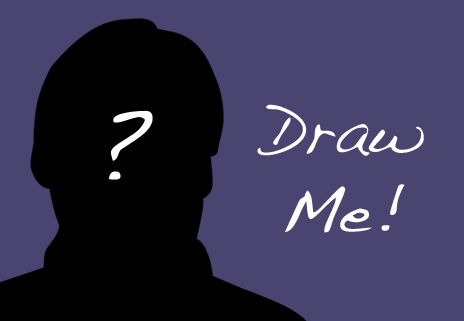
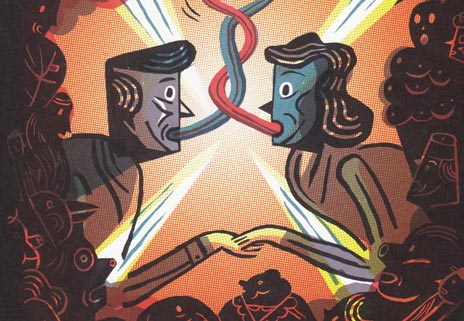
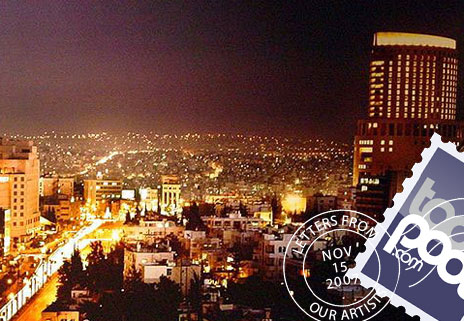

Great text. I like the off-topic (pirates) relation to cartoons, there are more topics ahead and a lot of experts to interview.